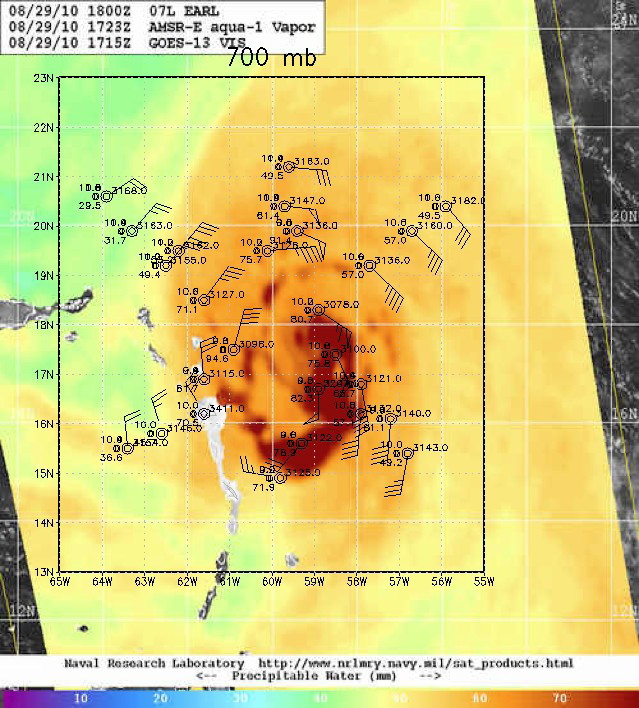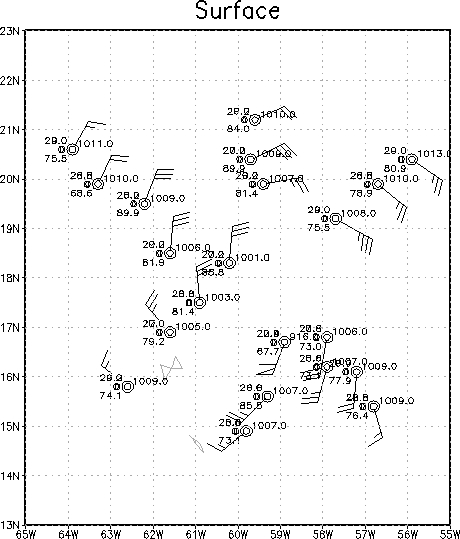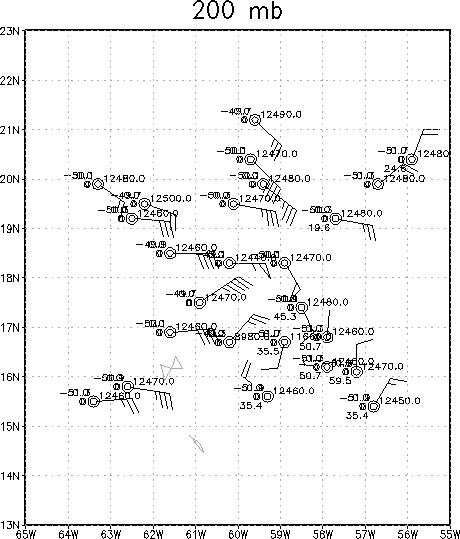
Figure 1. Total precipitable water from AQUA-1 valid at 1723 UTC 29 August, with 700 hPa dropwindsonde data.
| Aircraft Commander |
| Co-pilot |
| Flight Director |
| Flight Director |
| Electronics Technician |
| AVAPS Operator |
| Dropsonde Operator |
| Sim Aberson | Dropsonde scientist |
|
|
Mission Plan :
NOAA 49RF will fly an HRD-tasked Rapid Intensification Experiment mission around Hurricane Earl north of Barbados. A six-sided star pattern will be executed to sample the storm and environment with dropwindsondes. The G-IV will leave Barbados 1730 UTC and will recover back at Barbados by 0150 UTC on the next day.

The mission was fully successful with 32 dropwindsondes released, three were fast fall sondes and one had no winds. Earl was undergoing rapid intensification at the time, with initial intensity of 70 kt. Figure 1 shows the flight pattern flown, with 700 hPa station plots overlain on total precipitable water satellite retrieval during the time of the mission. The data do not correspond exactly since the mission occurred over 8 h, whereas the satellite retrieval is an instantaneous snapshot. The relative humidity data from the dropwindsondes compares roughly with the precipitable water retrievals, with very dry air seen in the environment on the west side. Note that some humidity observations show <50% relative humidity in regions where the satellite shows moderate moisture (orange coloring). Because of the large circulation of Earl, all the data show the cyclonic circulation of the cyclone.

Surface observations (Fig. 2) clearly show the cyclonic circulation and the gale-force wind radii in all directions from the center except the northwest. One sonde to the southeast of the center shows nearly hurricane-force winds at the surface. Lowest pressure reported in any of these sondes was 1001 hPa. All observations were more than 111.1 km from the storm center at the time of the drop. The circulation was very vertical and still evident at 200 hPa (Fig. 3). The upper levels also show good outflow in all directions from the storm center.

Problems :
Multiple problems were encountered with ASPEN. ASPEN was removing large amounts of what is clearly good data, with no way to retrieve them. Thus, these good observations were not available for realtime model and data assimilation studies. The raw data have been sent to NCAR to help in producing an improved ASPEN.
Sim Aberson
Sept. 8, 2010
Page last updated Sept. 8, 2010
Return to Mission page.